
Myanmar Villagers Say Coal Projects Leave Them Landless and in Poor Health
This photo essay is the fourth installment in NRGI's 2015 extractive industries photo documentary project, which aims to capture the complex political, environmental and social realities at resource extraction sites throughout Myanmar.
In 2003, Myanmar's ruling military had just finished surveying coal deposits and decided to initiate mining operations. The chief of Tigyit had bad news regarding potential compensation for the lands belonging to U Thit Nyein and other residents of his village in Shan state.
"Don't ask me how much; you will get as much as they give you," U Thit Nyein says the chief told them. "You guys don't own any land. The only thing you own is the space for your dead body when you die."
In the end, U Thit Nyein and his family received just 8,000 kyats (or approximately 8 US dollars) per acre for their 12 acres of land.
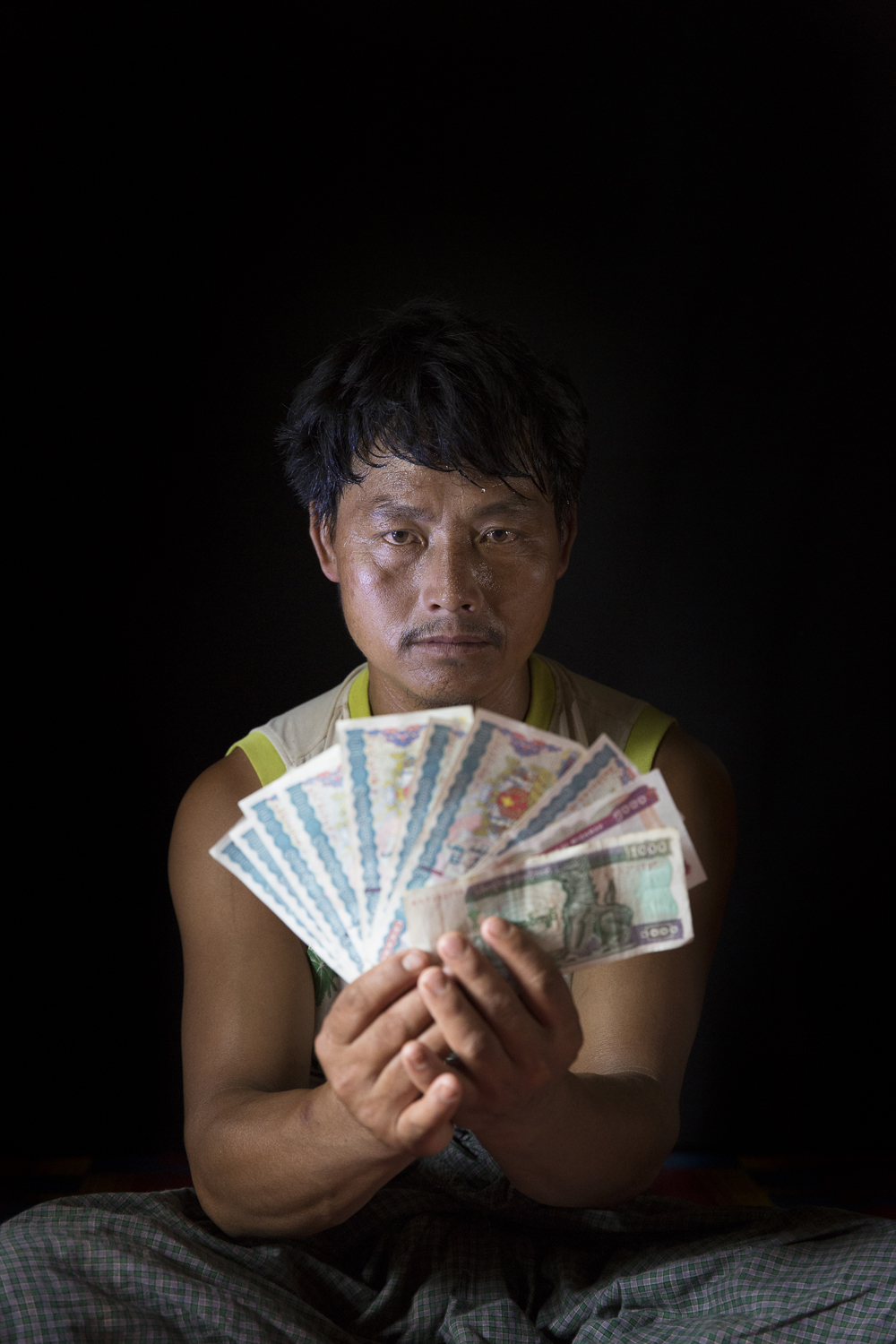
U Thit Nyein received only 96,000 kyats–or around $100–in compensation from the Tigyit coal mine project for his 12 acres of land in 2003. Since then, his family and many others have struggled to make a living. Suthep Kritsanavarin for NRGI
Tigyit is located on a major tributary of Myanmar's famous Inle Lake. Over the past 10 years, it has become home to the country's largest open-pit coal mine and its most important operating coal-fired power plant. The mine can produce nearly 2,000 tons of lignite coal every day, much of which supplies the plant. The plant has generation capacity of nearly 120 megawatts of electricity and is owned by the China National Heavy Machinery Corporation, Eden Group and Shan Yoma Nagar.
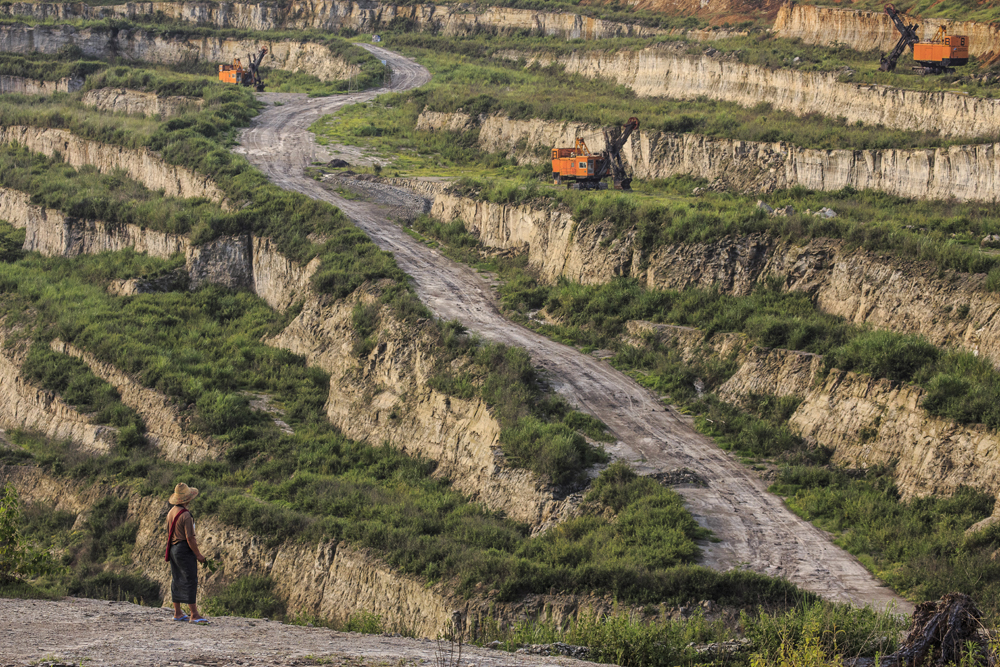
U Thit Nyein looks at the crater of Tigyit coal mine, where temporarily halted operations are poised to restart. His farmland was once situated at the middle of crater. Suthep Kritsanavarin for NRGI
Some locals dreamed of selling their land for higher prices when coal was first discovered underneath their farmland. Several residents of Aungban, a small town 40 kilometers away, even came to Tigyit to buy land. But farmers were barely compensated for their property, and struggled to make a living after losing their fields. Many of U Thit Nyein's friends went abroad; some never returned. He decided instead to care for his parents and stay in the village. "Most young people go abroad illegally," he told me. "They didn't have much choice to make a living here. It's because we lost the land that we lived off of."
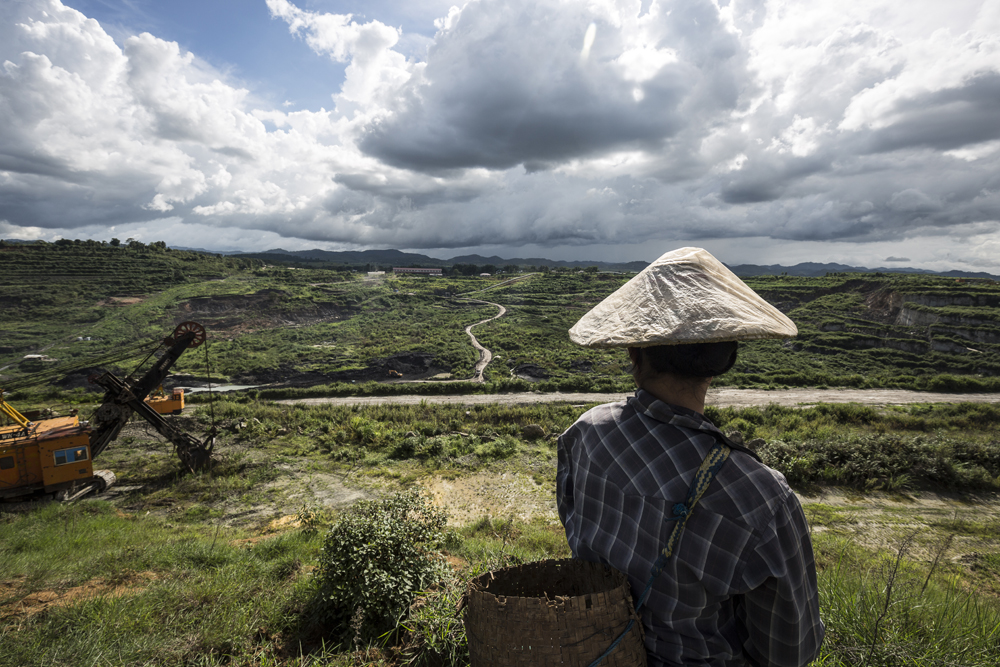
Ma Cho Aye, age 32, now lives in Mya Khan Thar village after being displaced from Lai Khar, a village that used to sit atop the Tigyit coal mine site. Suthep Kritsanavarin for NRGI
Today, piles of coal destined for the power plant tower above houses in Tigyit. Its waterways are polluted by the coal industry and mine blasts have wrecked the local pagoda. Around 500 acres of farmland have been seized. Two villages were forced to relocate without assistance. Local populations felt they had no say in a project that has radically affected their lives. They still have little understanding of its long-term environmental and health impacts.
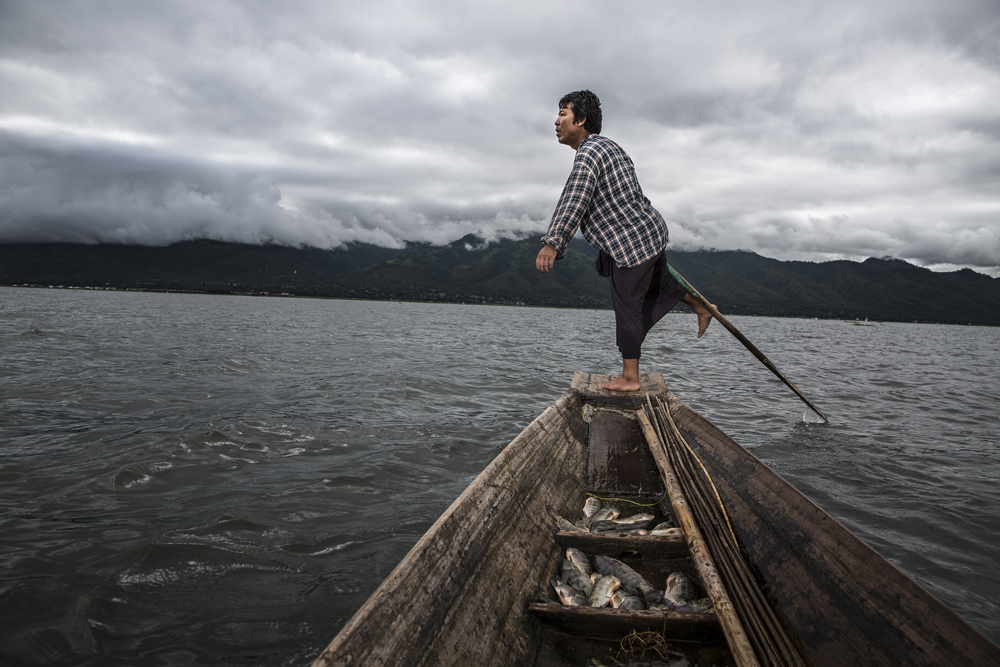
"I have been a fisherman since I was 14 and now I am 40." says Ko Soe. When he was young, there were nearly 400 fishermen in Inle Lake. But now there are just over 30 fishermen left, due mostly to declining fish populations. Suthep Kritsanavarin for NRGI
The Tigyit power plant produces an estimated 100-150 tons of toxic fly ash per day. This waste, as well as coal dust and other mining byproducts, has flowed into Inle Lake via Tigyit Creek and Balu Creek. Although no study of environmental effects has been conducted to date, some suspect that runoff has impacted the lake's marine ecosystem.
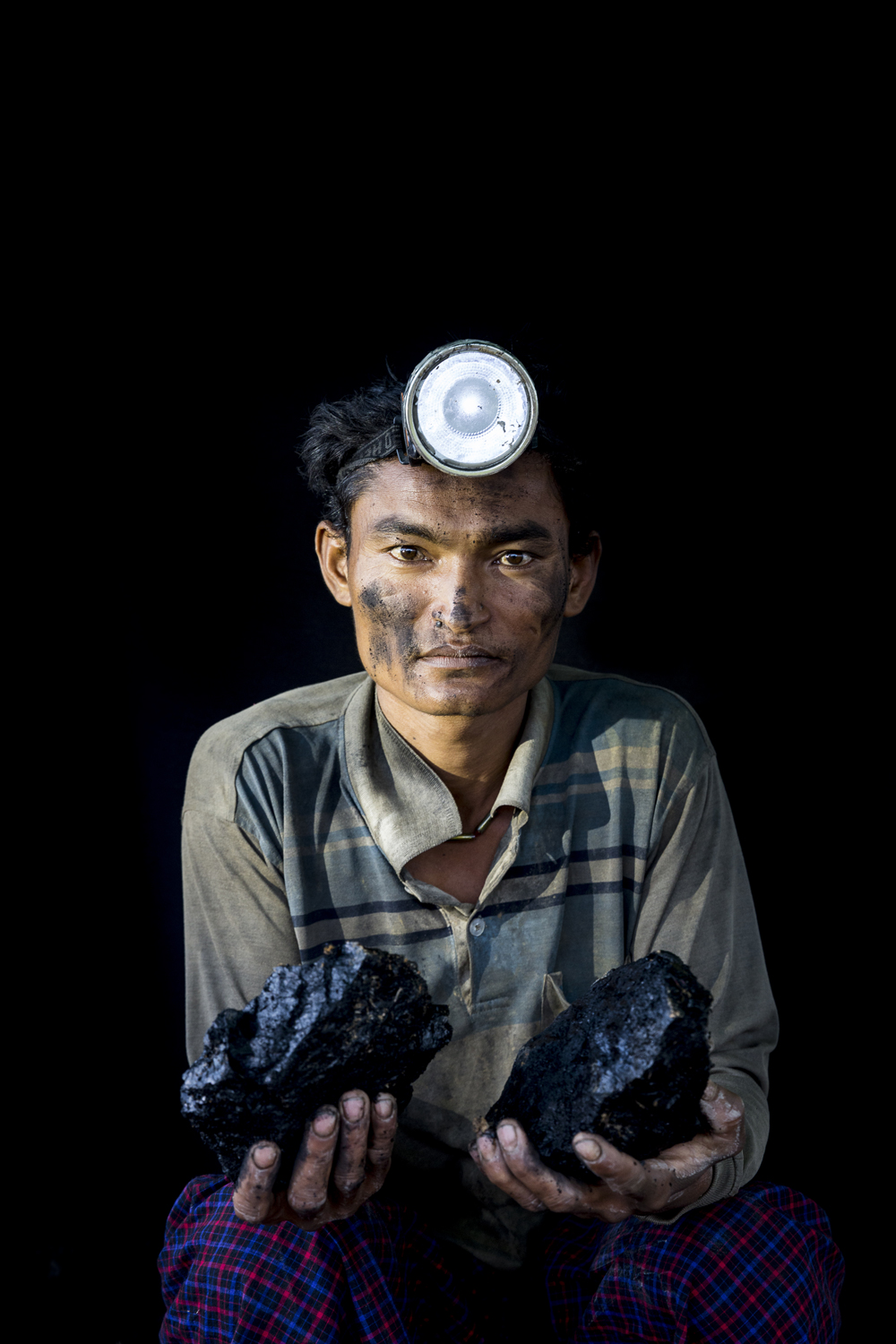
Saw Mat, the supervisor of a private coal mine. Suthep Kritsanavarin for NRGI
"I have been a fisherman since I was 14," says local fisherman Ko Soe, age 40. "There are fewer fish every year. It's because fish aren't able to reproduce." He says there were nearly 400 fishermen among all the villages in the lake when he was younger, but now there are only 30. Contamination has become increasingly concentrated in recent years as drought, deforestation and development reduce water levels in the lake.
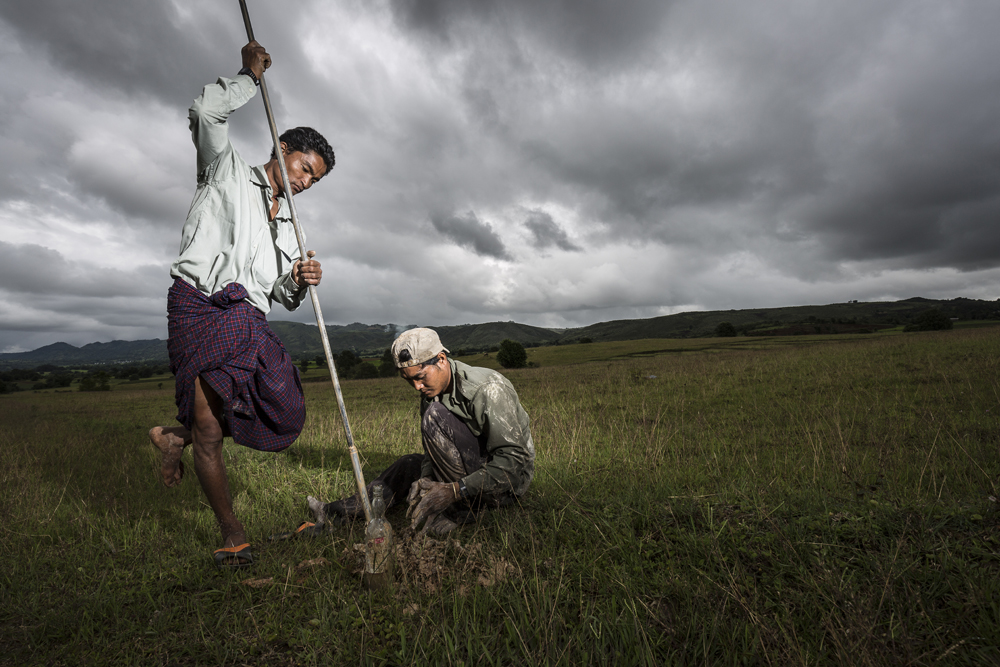
Workers test for coal underground. They work for a private mine. Suthep Kritsanavarin for NRGI
Coal extraction has also unleashed long-term health issues, according to community members. I met with one patient who had worked as a coal mine guard for more than 12 years. He lives inside the coal mine site, just 50 meters from the mine's open crater, which is 500 meters wide and more than 60 meters deep. "One rainy night, I couldn't walk properly and [experienced] terrible dizziness," he says. A doctor he visited ordered an X-ray and found a spot in his lung, which he attributed to his work near the coal mine. The patient said he has not received any support from mining companies for his medical treatment.
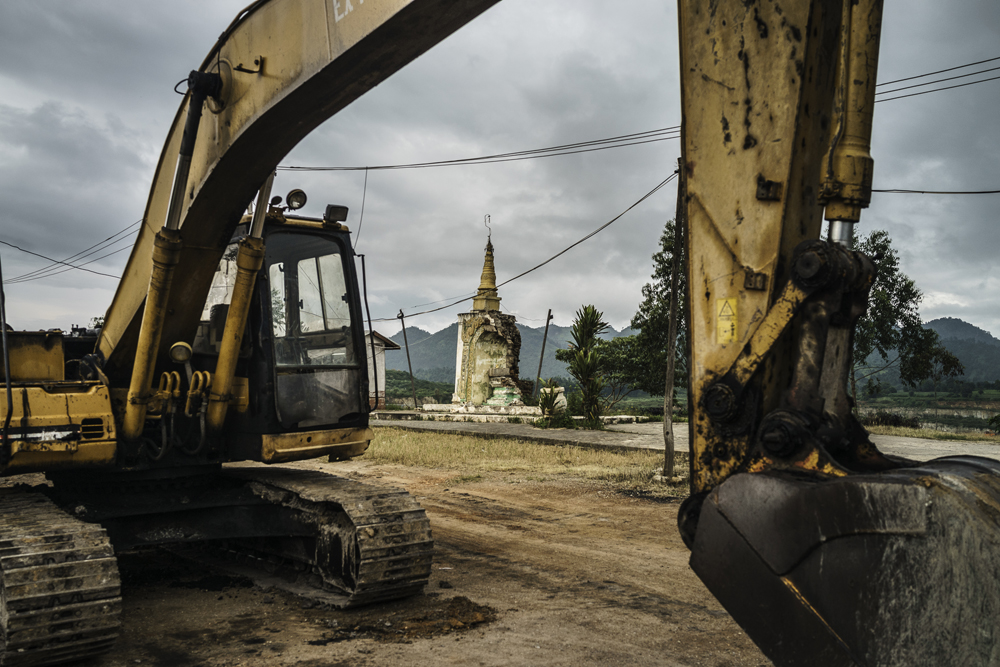
The Tigyit village pagoda has crumbled and disintegrated as a result of forceful explosions from the nearby mine. The destruction incensed local villagers. Later, villagers gathered broken pieces of the pagoda and returned them to its traditional site. Suthep Kritsanavarin for NRGI
When I visited Tigyit, operations at the mine had been on hold for 10 months while the power plant was being upgraded by China National Heavy Machinery Corporation. However, locals expected operations to resume shortly. "I have heard that the mine and power plant will start again soon," said Nan Htwe Htwe Khan, who has joined a local civil society group. "If it does operate again, I am afraid many people will have difficulty breathing."

A workshop conducted by a Thai NGO includes training aiming to increase capacity among local civil society groups. Suthep Kritsanavarin for NRGI
She said that her mother developed hypertension and troubled breathing before passing away, and cited the mine operations as one of the reasons she died. She also said she wants to help her people by preventing a restart of the coal mine. "I want to free my people from fear," she said, "that's why I joined a civil society group here."
Suthep Kritsanavarin is a Thai documentary photographer, based in Bangkok.
The views he expresses here are his own, and do not represent NRGI. NRGI does not guarantee the accuracy, completeness and validity of any statements made within this article. NRGI accepts no liability for any errors, omissions or representations.
